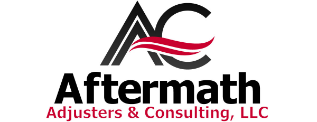No one wants to deal with a home break-in and theft. However, if it happens to you, your homeowners insurance will help cover the costs. Here are some things you should understand about homeowners insurance and theft.
Dwelling Coverage
This coverage covers repairs to your home caused by a covered peril. Theft is one of those perils.
During a theft, the intruder may have caused damage to your home, such as:
- Damaged window
- Damaged door
Personal Property Coverage
This part of your homeowners insurance coverages replaces or repairs belongings taken or damaged during a theft. This means that if the intruder steals your computer or breaks your table, your insurance may cover the cost to repair or replace these items.
There are two types of personal property coverage: replacement cost and actual cash value. If you have replacement cost coverage, your insurance will cover the cost of repurchasing the item. On the other hand, if you have actual cash value, the amount you receive will take depreciation into consideration.
Other Structure Coverage
Other structure coverage pays for damage in a covered peril to structures on your property that are not part of your home. This includes such structures as:
- Detached garage
- Shed
- Fence
- Patio
If these structures experience damage during a theft, this portion of your homeowners insurance will kick in.
Coverage Limits
Your settlement for a theft claim will depend on your specific insurance policy. Here are a few things that could potentially limit your settlement.
- Deductible: This is the amount that you pay out-of-pocket for each claim. Some policies have small deductibles while others can be quite large. If you have trouble finding your deductible, call your insurance carrier or contact Aftermath Adjusters & Consulting to help you understand your policy.
- Coverage Limits: This is the maximum amount paid by the insurance company for a covered peril. Once again, different policies have different coverage limits.
- Personal Property Coverage Limits: Most policies cover personal property between 50 and 70% of the amount of insurance you have on your home.
- Sub-Limits: Some valuable items will have lower sub-limits than the standard personal property coverage limits. For instance, jewelry or art may have a cap. As a note, you may be able to purchase additional personal property coverage to increase your coverage for high-value property.
- Other Structures Coverage Limits: Most policies cover other dwellings at a specified percentage of overall coverage. As an example, if your overall coverage is $500,000 and your Other Structures Coverage limit is 10%, then your other structures would be covered up to $50,000.
Tips for Filing a Claim
If you experience theft, then you will want to file a claim. Here are a few tips to keep in mind.
- Start by getting a police report
- Contact your insurance agent to start the claim process
- Get photo or video proof of all damage
- Prepare a list of stolen items – if you have a home inventory, this part of the process will be much easier
- Make emergency repairs so that your home sustains no further damage. Be sure to save receipts for expenses incurred while making these repairs.
- Contact a public adjuster to help
Aftermath Adjusters & Consulting recommends that you review your insurance policies at least yearly to determine if you have the correct coverage for your needs. If you would like help assessing your coverage or have experienced a theft and need help with your claim, give us a call. We are happy to help.









